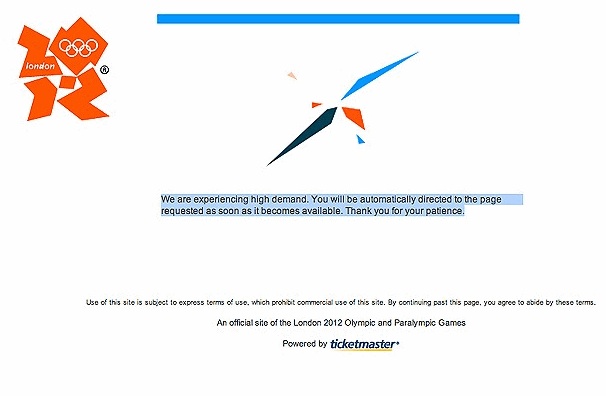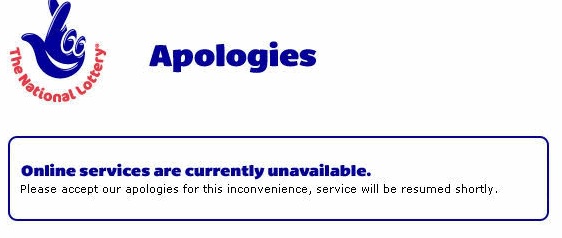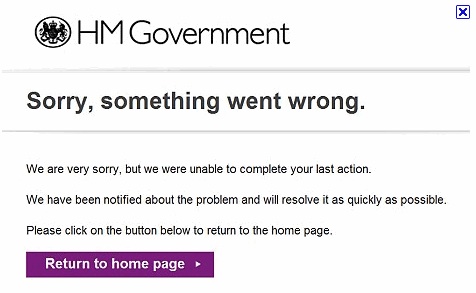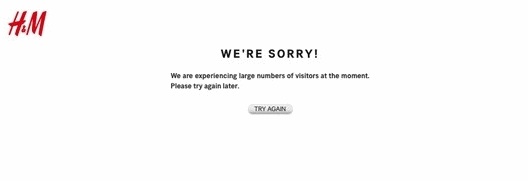2011 in review: the top five failed web launches
Susan Chadwick, co-founder of Edge Testing Solutions, looks back at her top five, well publicised web launch crashes and offers advice on how you can avoid the indignity of apologising to customers when your website falls over
2011 has been a bumper year for publicity surrounding glitches, gremlins and a new phenomenon I have started to refer to as ‘glaunching’, where a glitch at launch results in a mass media buzz.
1. Olympics
First off the mark was the Olympic ticket launch in March. We were politely warned not to all rush at once, but it was a ticket payment problem, as thousands of customers whose credit or debit cards expired before August 2011 were thrown out of the booking system, that was the first glitch to emerge. Followed in second place by The Olympic clock which stopped its countdown just minutes after launch.

2. National Lottery
And luck ran out again just a couple of days later when Brits hoping to buy tickets for the record breaking £121 million EuroMillions jackpot draw were left frustrated by a ‘website glitch’. When thousands logged on to the National Lottery website as the ticket purchase deadline approached they were met with an error preventing them from adding funds or updating debit card details and so were unable to take part in the draw.

3. Directgov
Later in the year our hopes for influencing government policy were stalled when the Government's e-petition website crashed on the first day as users flocked to sign petitions. The Directgov website went live with a list of e-petitions, but repeatedly crashed through sheer weight of numbers as it opened for business.

4. Harry Potter
And where was Harry’s wand when Warner Brothers opened up bookings for its studio tour, The Making of Harry Potter? Customers were unable to complete the booking process and fans vented their frustration on social networking sites with some saying it took two hours to book. Warner Brothers blamed the volume of traffic to the site for the glitch.

5. H&M Versace collection
Just last month Versace’s much hyped collection for H&M went on sale in-store and online. Yet despite reports that they were taking huge precautions offline and in-store – including hiring security guards, corralling shoppers into holding pens before giving them 10 minutes shopping and preventing eBay traders from emptying racks into laundry bags – the same precautions did not seem to be taken online. H&M's website crashed under the demand as thousands tried to log on simultaneously. A spokesperson for the store took to Twitter to apologise for 'technical problems', saying they were 'working hard to solve them.'

Traffic
A common theme running through all of these high profile crashes is volume of traffic as hordes of customers, driven by pre-launch marketing activity, try to log on at the same time. Offline you can see the queues snaking down the street and you can physically marshal the crowds, but online there seems to be much less thought given to what will happen on Day One.
This begs the question – what was the strategy for testing under load and did they performance test before launch? Of course the cynic in me recognises that a glaunch comes with the often very welcome and (un)expected acres of ‘money can’t buy’ media coverage. The glaunch can spark a feeding frenzy and heightened demand for your product. But that is a risky business strategy – the reputational damage to a brand can be catastrophic and the long-term harm of customer dissatisfaction is not always apparent on that first day.
The other worrying issue here is the quickness of the organisation to come out and blame the crash on volume of customers – this seems to have become an acceptable excuse for a website not meeting demand. More worryingly customers seem to accept this reason as unavoidable. This is not a great advert for the competence of the web design and hosting industries. There is no reason for a website to fall over at launch and I would argue that customers will become less and less forgiving as the online market matures.
Of course there is a marketing argument for making something feel special, rare and hard to get hold of, but that shouldn't be used to justify bad planning and poor testing. What you must do is make a conscious business decision based on a robust cost benefit analysis.
So, assuming that there will be a lot of hype around the launch, does the cost and effort involved in testing and making provision for volume outweigh the associated publicity, and can you control the media? You may decide that it's not worth spending the money on that level of testing and can live with a glaunch on Day One. But there is a fine line between a glitch and a disaster, and there must be a calculated business decision behind that ‘glaunch’.
To help you avoid glaunching here are my top tips:
Get the Creative Bloq Newsletter
Daily design news, reviews, how-tos and more, as picked by the editors.
- Define your performance and load requirements at the design stage, from both a software and infrastructure perspective.
- Carry out robust cost benefit and risk analysis.
- Define a clear test strategy to validate and verify performance to the required levels, including one off peaks and planned growth.
- Clearly understand the factors that will cause peaks and how they will be handled
- Implement your performance test strategy for ongoing performance, peak load and stress testing.
- Carry out testing independently: don’t mark your own work.
Have you experienced a failed website launch this year? What do you do to prevent it in your own work? Let us know in the comments!

Thank you for reading 5 articles this month* Join now for unlimited access
Enjoy your first month for just £1 / $1 / €1
*Read 5 free articles per month without a subscription

Join now for unlimited access
Try first month for just £1 / $1 / €1
The Creative Bloq team is made up of a group of design fans, and has changed and evolved since Creative Bloq began back in 2012. The current website team consists of eight full-time members of staff: Editor Georgia Coggan, Deputy Editor Rosie Hilder, Ecommerce Editor Beren Neale, Senior News Editor Daniel Piper, Editor, Digital Art and 3D Ian Dean, Tech Reviews Editor Erlingur Einarsson, Ecommerce Writer Beth Nicholls and Staff Writer Natalie Fear, as well as a roster of freelancers from around the world. The ImagineFX magazine team also pitch in, ensuring that content from leading digital art publication ImagineFX is represented on Creative Bloq.
